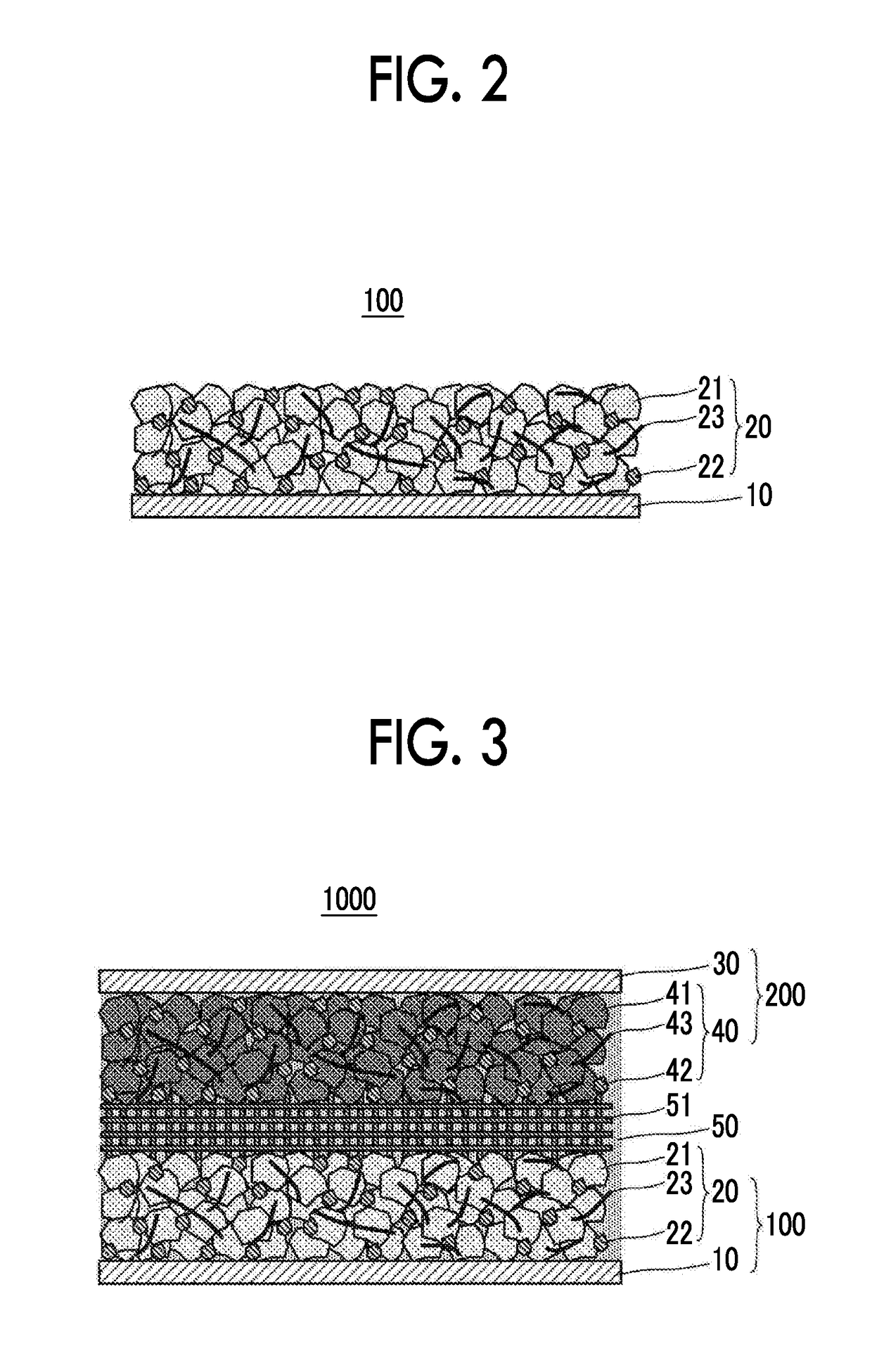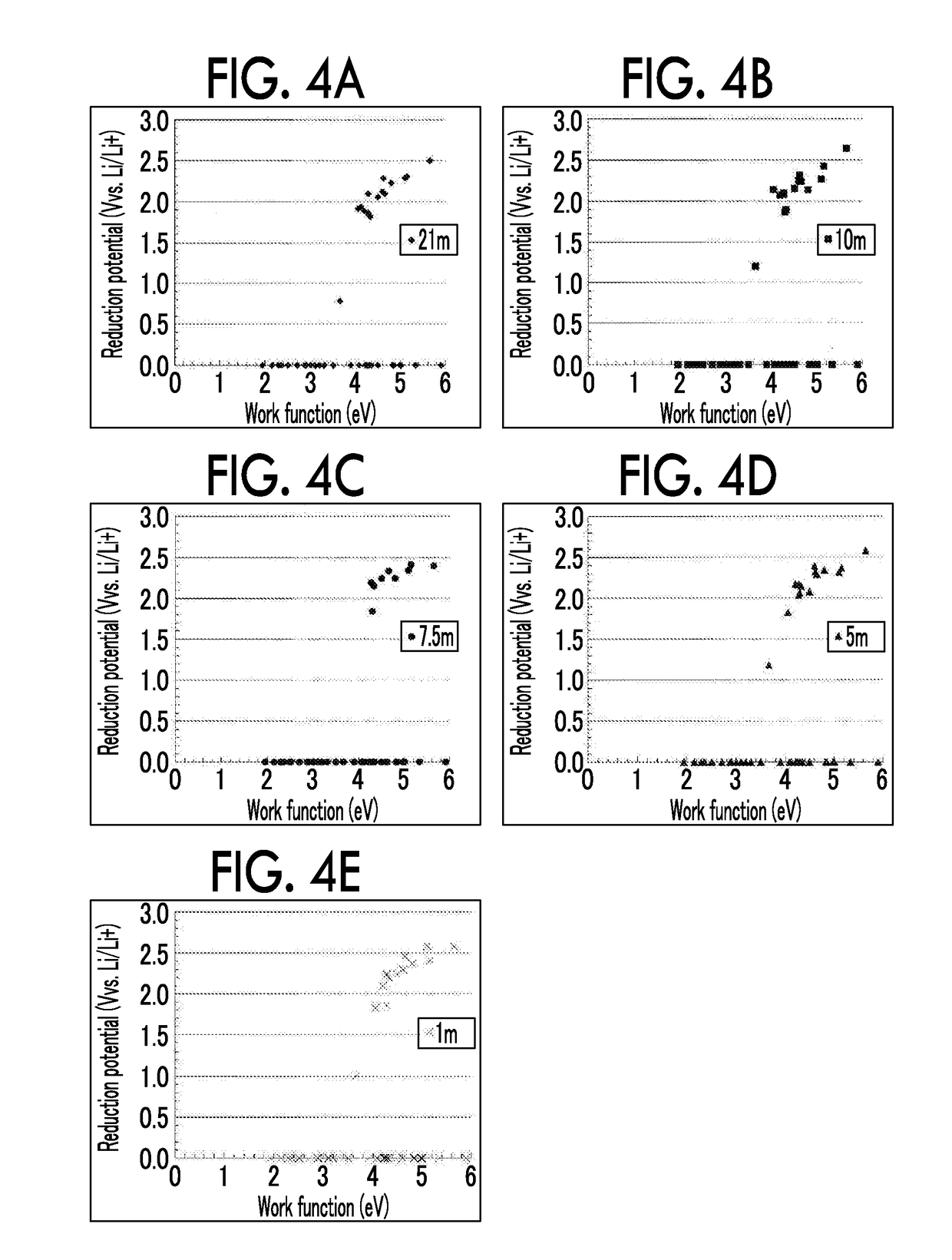Negative electrode current collector, negative electrode, and aqueous lithium ion secondary battery
- Summary
- Abstract
- Description
- Claims
- Application Information
AI Technical Summary
Benefits of technology
Problems solved by technology
Method used
Image
Examples
Embodiment Construction
[0043]1. Negative Electrode Current Collector
[0044]FIG. 1A to FIG. 1C show examples of a configuration of a negative electrode current collector. A negative electrode current collector 10 shown in FIG. 1A to FIG. 1C is used in contact with an aqueous electrolyte solution in an aqueous lithium ion secondary battery. Among surfaces of the negative electrode current collector 10, a surface that is brought into contact with the aqueous electrolyte solution is made of a material 11 containing at least one selected from the group consisting of Ti, Pb, Zn, Sn, Mg, Zr and In as a main component.
[0045]According to new findings by the inventors, when a material with a work function of 4.5 eV or less is used to form a surface (particularly, a surface that is brought into contact with the electrolyte solution) of the negative electrode current collector 10, it is possible to increase an overvoltage for reductive decomposition of water and greatly expand a reduction side potential window of the ...
PUM
 Login to View More
Login to View More Abstract
Description
Claims
Application Information
 Login to View More
Login to View More - R&D Engineer
- R&D Manager
- IP Professional
- Industry Leading Data Capabilities
- Powerful AI technology
- Patent DNA Extraction
Browse by: Latest US Patents, China's latest patents, Technical Efficacy Thesaurus, Application Domain, Technology Topic, Popular Technical Reports.
© 2024 PatSnap. All rights reserved.Legal|Privacy policy|Modern Slavery Act Transparency Statement|Sitemap|About US| Contact US: help@patsnap.com










